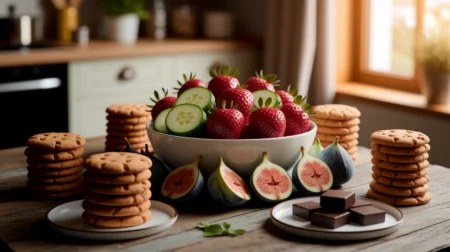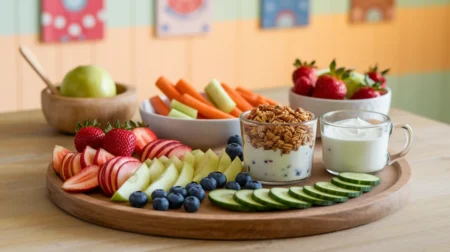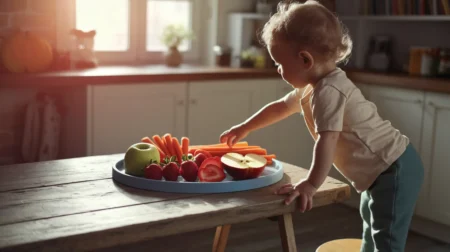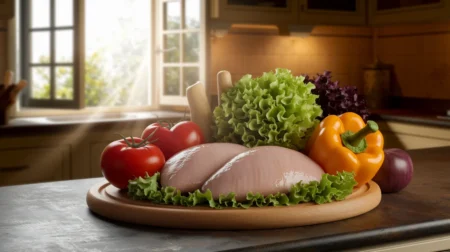Baby Food Recipes
Key Takeaways:
- Homemade baby food recipes provide fresh, nutritious options for your infant.
- Introducing stage 1 purees helps develop your baby’s palate and offers essential nutrients.
- A variety of flavors can be combined to create delightful and healthy meals for your baby.
When it comes to feeding your little one, baby food recipes provide a fantastic opportunity to ensure they are getting the nutrition they need as they begin their journey with solids. Homemade baby food not only allows you to choose fresh ingredients, but it also introduces your baby to a range of flavors and textures. This guide will provide you with a variety of baby food puree recipes that are perfect for stage 1 eaters, as well as tips for making your own baby food at home.
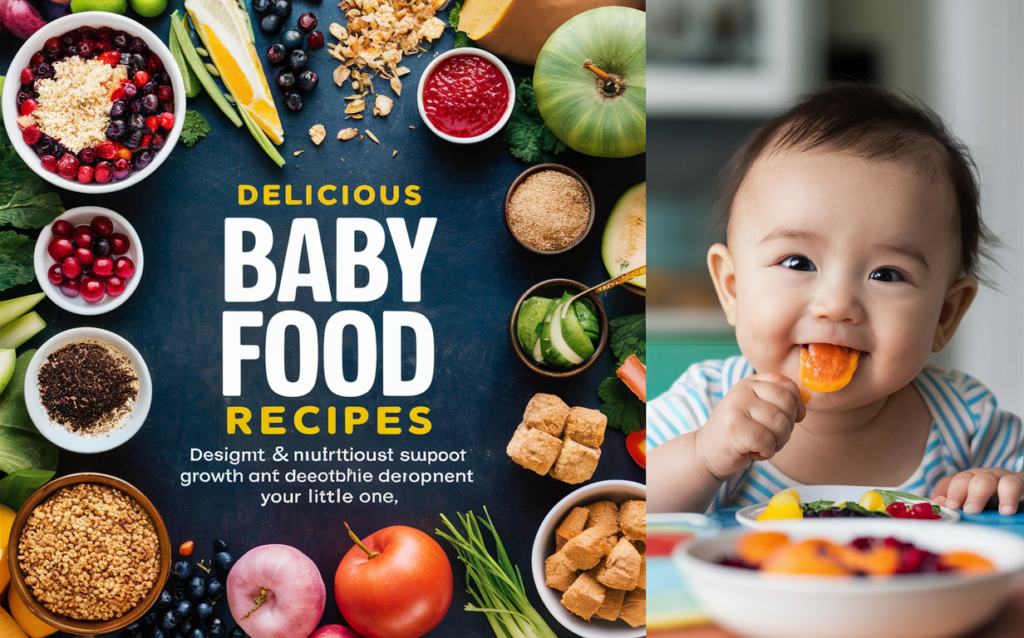
Understanding Stage 1 Baby Food
Stage 1 baby food is designed for infants who are just beginning to eat solids, typically around 4 to 6 months old. These recipes consist of smooth purees that are easy for your baby to digest. They should include single-ingredient purees to help identify any food allergies or sensitivities. As your baby gets accustomed to new flavors, you can gradually introduce combinations.
Essential Tips for Making Baby Food
1. Choose Fresh, Organic Ingredients
Opt for organic fruits and vegetables whenever possible to reduce exposure to pesticides. Fresh produce ensures that your baby is getting the highest quality nutrients.
2. Invest in Quality Equipment
A good blender or food processor is essential for making smooth purees. You might also consider using a steamer to cook your fruits and vegetables gently, preserving their nutrients.
3. Start with Simple Flavors
Introduce single flavors first, such as apples, sweet potatoes, or carrots, before moving on to combinations. This will help you monitor your baby’s reactions to new foods.
4. Store Properly
You can make large batches of baby food and store them in ice cube trays for easy portioning. Once frozen, transfer the cubes to a zip-top bag and label them with the date and type of food.
Easy Baby Food Recipes
1. Applesauce
Ingredients:
- 2 apples (peeled, cored, and chopped)
Preparation:
- Steam or boil the apples until soft (about 10-15 minutes).
- Blend until smooth, adding a little water if needed.
Nutritional Benefits:
Apples are rich in vitamin C and fiber, which aid digestion.
2. Sweet Potato Puree
Ingredients:
- 1 medium sweet potato
Preparation:
- Peel and chop the sweet potato.
- Steam or boil until tender (about 20 minutes).
- Blend with water or breast milk until smooth.
Nutritional Benefits:
Sweet potatoes are high in beta-carotene, which is great for eye health.
3. Carrot Puree
Ingredients:
- 3 medium carrots (peeled and chopped)
Preparation:
- Steam or boil the carrots until soft (about 15-20 minutes).
- Blend until smooth, adding liquid as needed.
Nutritional Benefits:
Carrots provide a good source of vitamin A, important for growth and immune function.
4. Avocado Mash
Ingredients:
- 1 ripe avocado
Preparation:
- Cut the avocado in half and remove the pit.
- Scoop the flesh into a bowl and mash with a fork.
Nutritional Benefits:
Avocado is rich in healthy fats that are essential for brain development.
5. Banana Puree
Ingredients:
- 1 ripe banana
Preparation:
- Peel and slice the banana.
- Mash it with a fork or blend until smooth.
Nutritional Benefits:
Bananas are a great source of potassium and provide natural sweetness.
6. Pea Puree
Ingredients:
- 1 cup peas (fresh or frozen)
Preparation:
- Steam or boil the peas until tender (about 5-7 minutes).
- Blend with water or breast milk until smooth.
Nutritional Benefits:
Peas are packed with protein and fiber, supporting growth and digestion.
7. Pumpkin Puree
Ingredients:
- 1 cup pumpkin puree (fresh or canned)
Preparation:
- If using fresh pumpkin, cut it in half, remove the seeds, and roast until soft.
- Blend until smooth.
Nutritional Benefits:
Pumpkin is rich in vitamins A and C, making it a nutritious choice.
8. Pear Puree
Ingredients:
- 2 pears (peeled, cored, and chopped)
Preparation:
- Steam or boil the pears until tender (about 10 minutes).
- Blend until smooth.
Nutritional Benefits:
Pears are gentle on the stomach and high in fiber.
Exploring Baby Food Flavors
As you introduce new baby food flavors, consider combining different purees to create unique blends. Here are some ideas for flavor combinations:
- Apple and Pear: A sweet and nutritious combination.
- Sweet Potato and Carrot: A colorful blend full of vitamins.
- Banana and Avocado: Creamy and rich, great for healthy fats.
- Peas and Carrots: A savory mix that is high in protein.
By using a baby food flavors list, you can ensure that your baby is getting a variety of nutrients and tastes, which is important for developing healthy eating habits.
DIY Baby Food Ideas
Making your own baby food at home is simple and rewarding. Here are some tips for diy baby food:
- Batch Cooking: Prepare several different purees at once and freeze them in individual portions for quick meals later.
- Experiment with Textures: As your baby gets used to purees, start to introduce slightly chunkier textures to help them adapt to chewing.
- Use Spices and Herbs: After introducing single ingredients, consider adding mild spices like cinnamon or nutmeg to enhance flavors.
Conclusion
Preparing homemade baby food recipes is a wonderful way to provide your infant with nutritious, delicious meals. By using fresh ingredients and experimenting with flavors, you can create a variety of baby food puree recipes that cater to your baby’s developing tastes. Whether you opt for stage 1 purees or more complex combinations, making your own baby food ensures that your little one receives the best nutrition possible.
FAQ
1. When should I start introducing baby food?
Most parents begin introducing solids around 4 to 6 months, but it’s essential to consult with your pediatrician.
2. How long can I store homemade baby food?
Homemade baby food can typically be stored in the refrigerator for 3 days or frozen for up to 3 months.
3. Can I use frozen fruits and vegetables for baby food?
Yes, frozen fruits and vegetables are great options as they are often frozen at peak ripeness, preserving their nutrients.
4. Is it necessary to buy organic baby food?
While organic options are preferable, especially for items known to have high pesticide residues, focusing on fresh and wholesome ingredients is the most important factor.
5. How can I tell if my baby is ready for more complex foods?
Signs of readiness include sitting up unsupported, showing interest in food, and being able to close their lips around a spoon.





